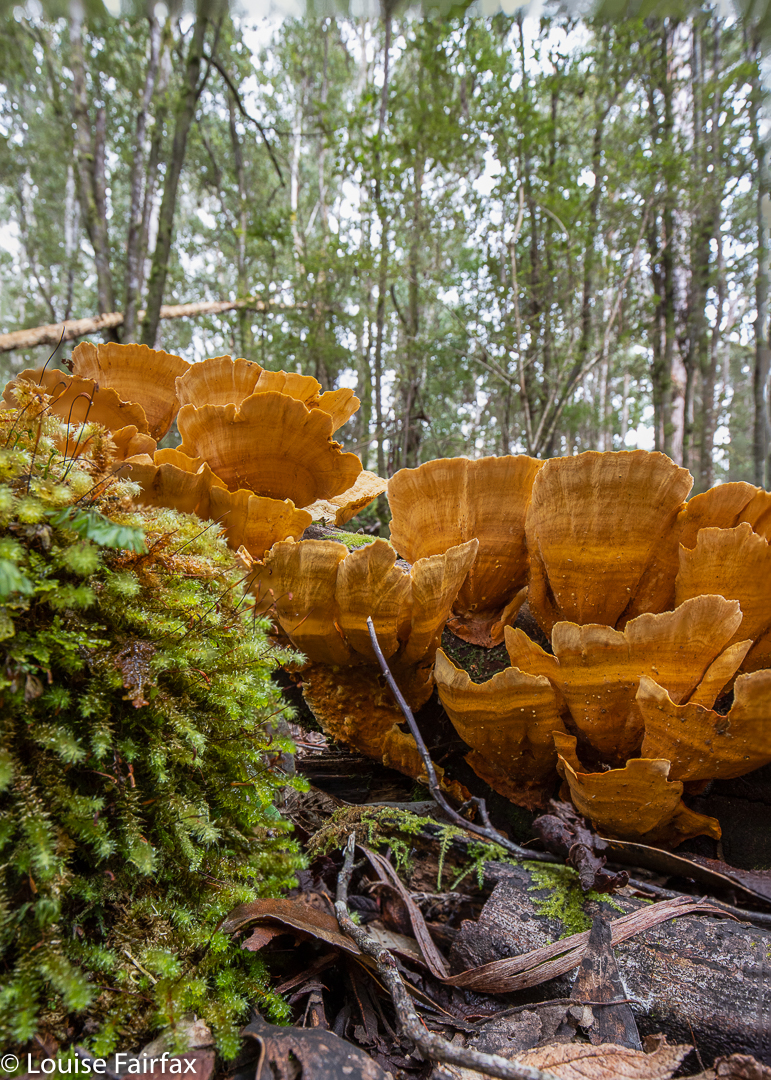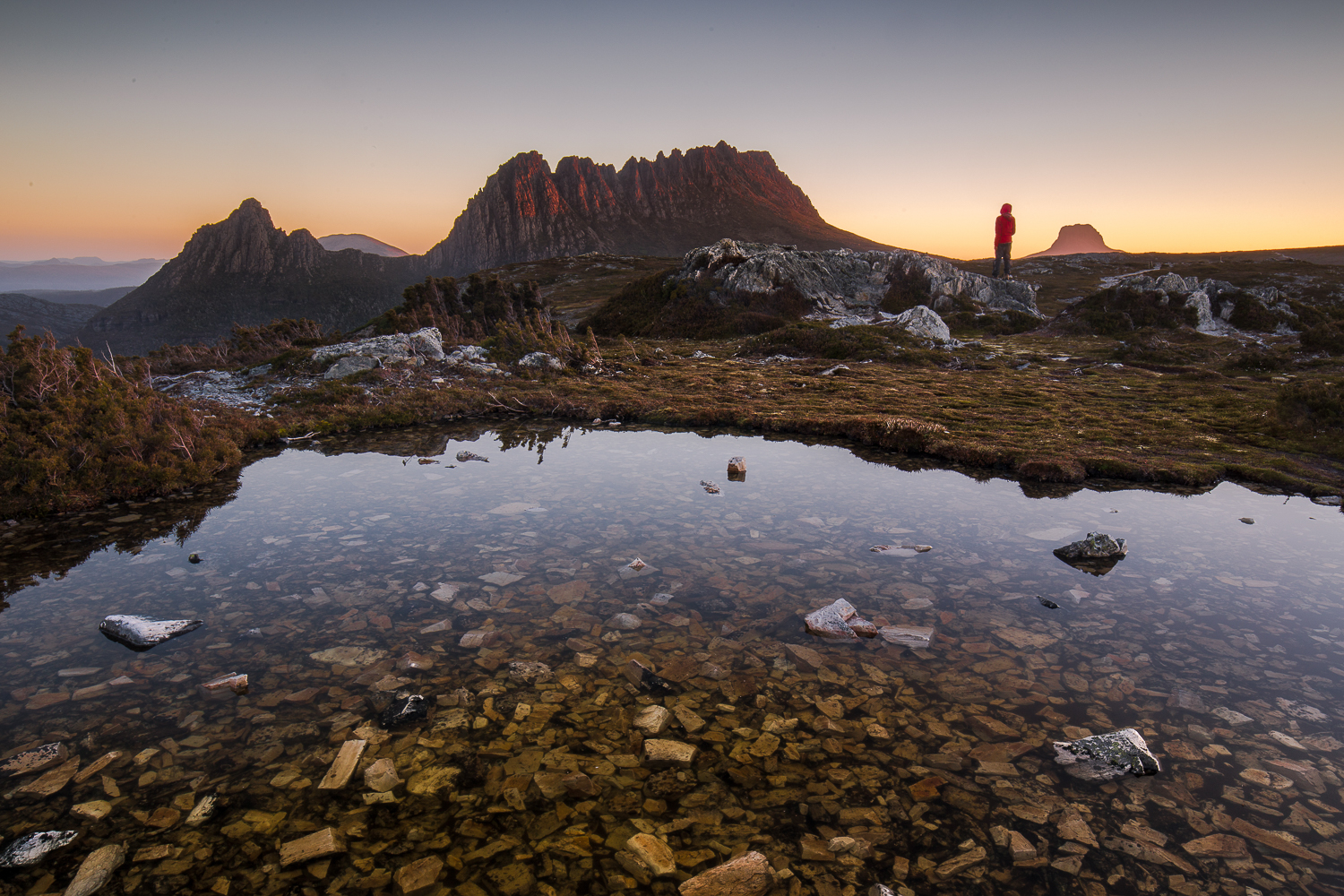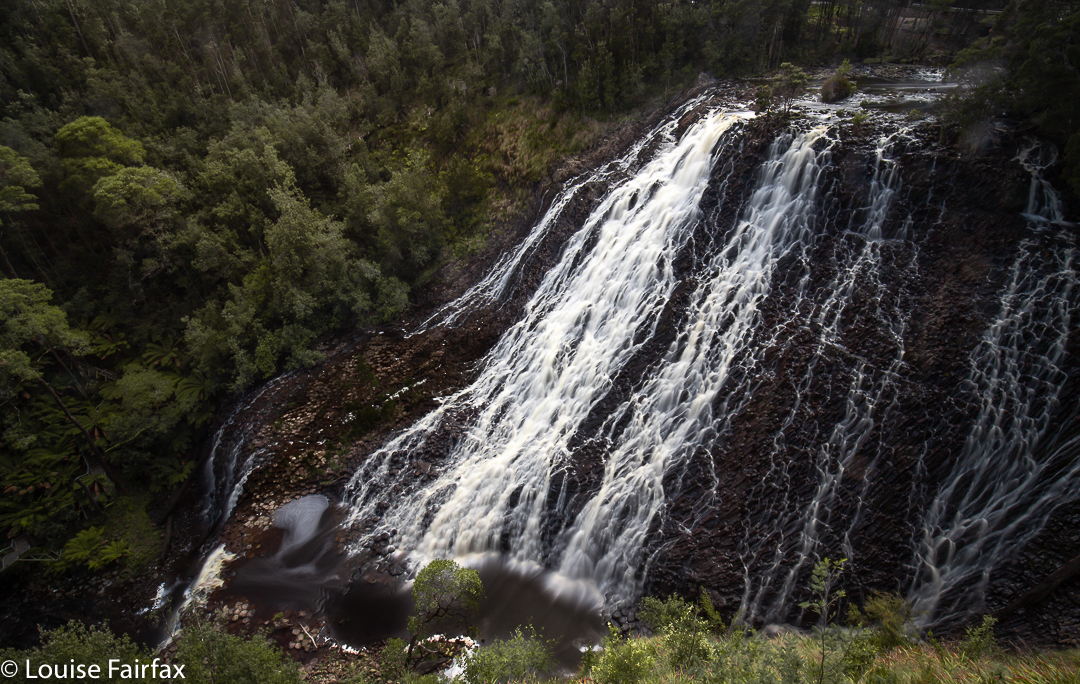
I know that Dip Falls (Upper and Lower) are the famous ones, but I’m afraid they just didn’t do it for me. Yes, they were attractive; yes, their dimensions were ginormous; yes, they were in many aspects impressive, but I could not divorce them from the equally enormous, arresting and dominating human infrastructure with which they are now overshadowed, so that all the dear tourists can get to the base without having any real contact with nature in which they might hurt their tootsies or fingers. The first thing you notice is not the whopping sense of space that these falls occupy, but the humungous stairwell present.
The whole way down, it is not the marvellous green and rich brown of the lush forest that demands your attention, but the shining steel railings. 1 min 23 down; 2 mins 00 up. Duty done. A few photos taken at the base and then at the top. I prefer my Tassie Wild thanks.

There was not even enough exercise to justify the trip. It is exceptionally difficult to take a photo that does not include unnatural objects. I photoshopped mine out, as I hate looking at them. I go into the bush to escape the ugliness of human invasion and incursion, not to have more of it for the sake of tourists. My waterfalls need to be in the context of surrounding beauty.
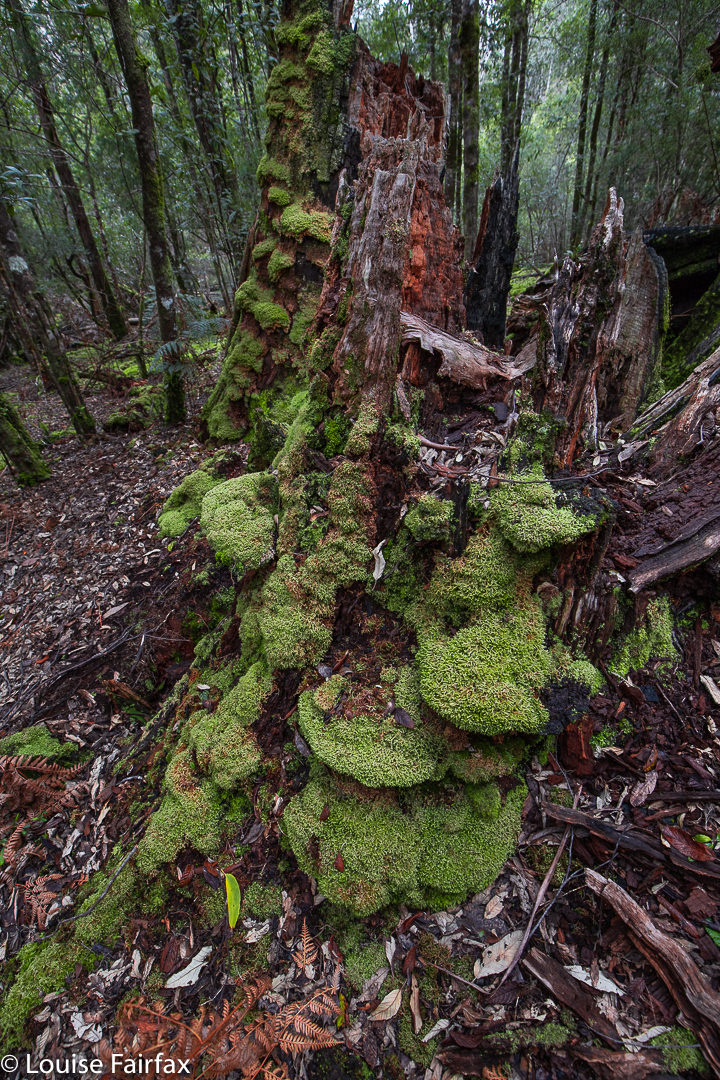
Luckily, the friend who was with me this day had heard of Little Dip Falls from Brendan Costello’s blog, so off we went in search of it. Now, HERE was a waterfall worth visiting. No smashing stairwells and steel, but rather, pure mossy forest, masses of startling fungi (although it is October), and a delicate, dainty waterfall of subtle beauty.
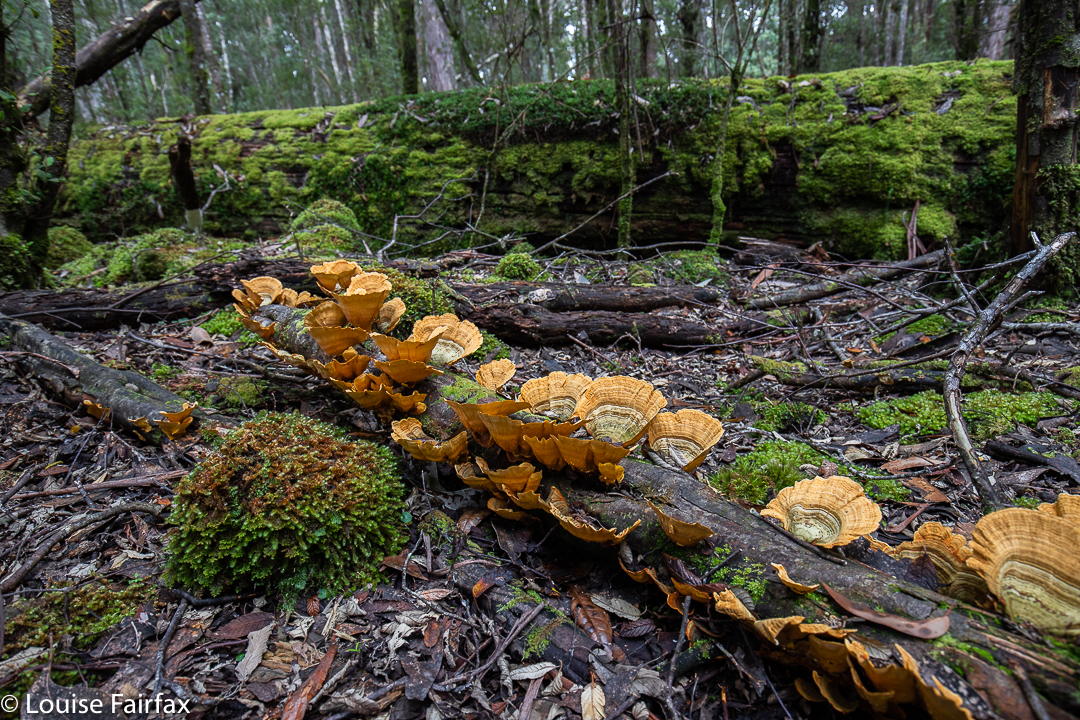
There were not even any horrid pink tapes, so we were free to choose our own route. We spent a much longer amount of time at these falls than at the others, as they were so much more appealing. The big dips are sacrificial pawns to the tourist industry, which is ever taking over the beautiful natural features Tasmania has to offer, and locking Tasmanians out of their own land.

